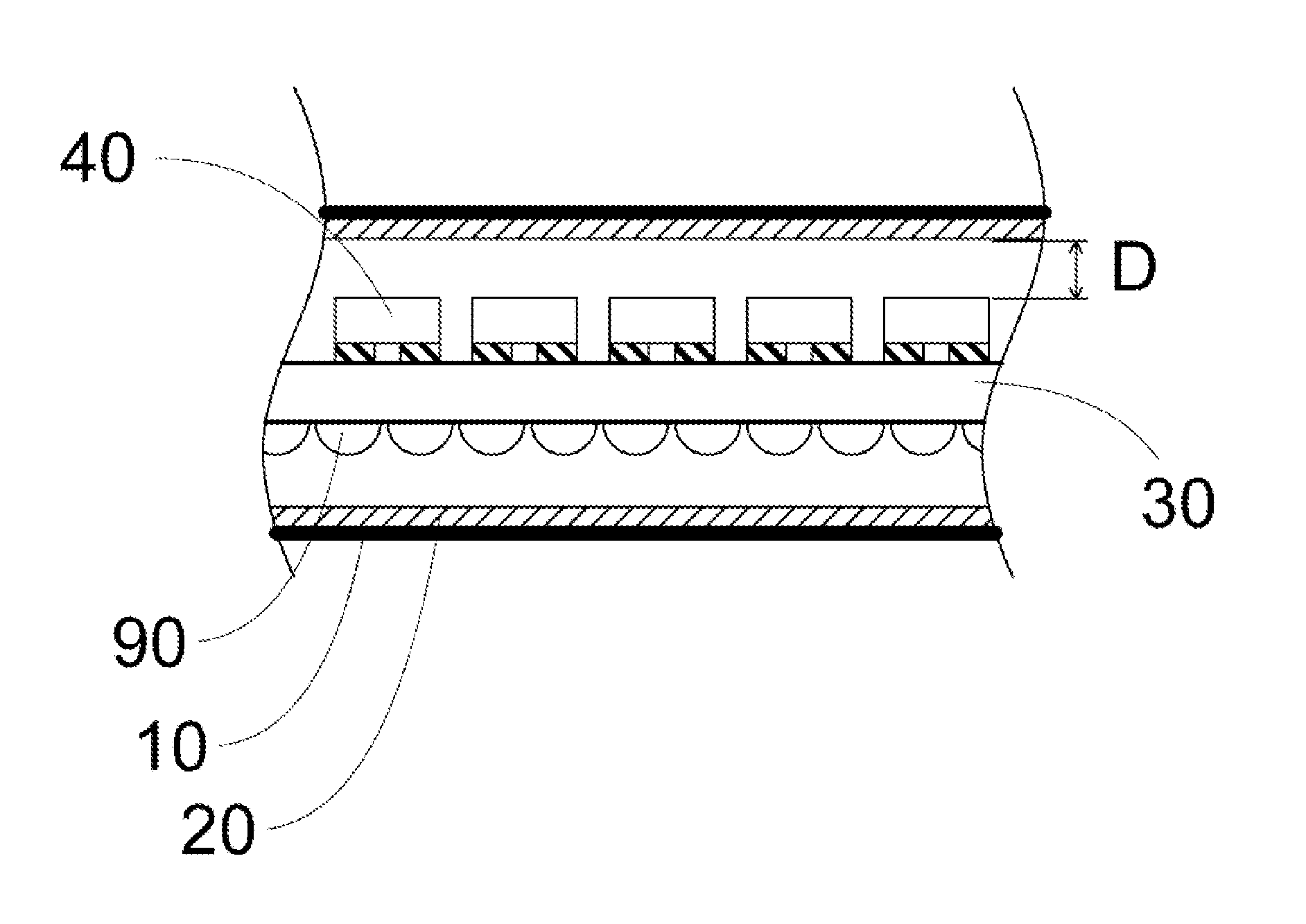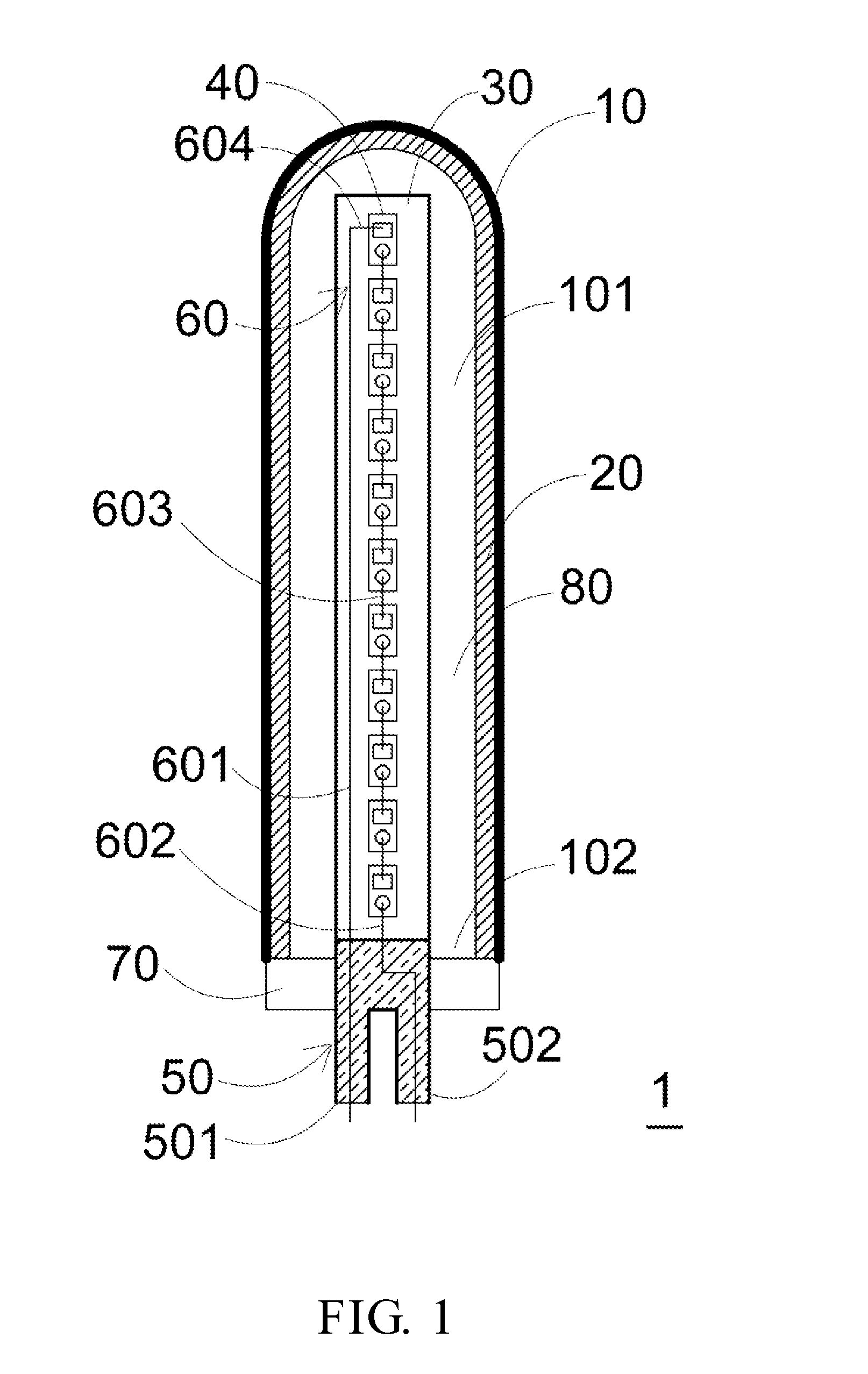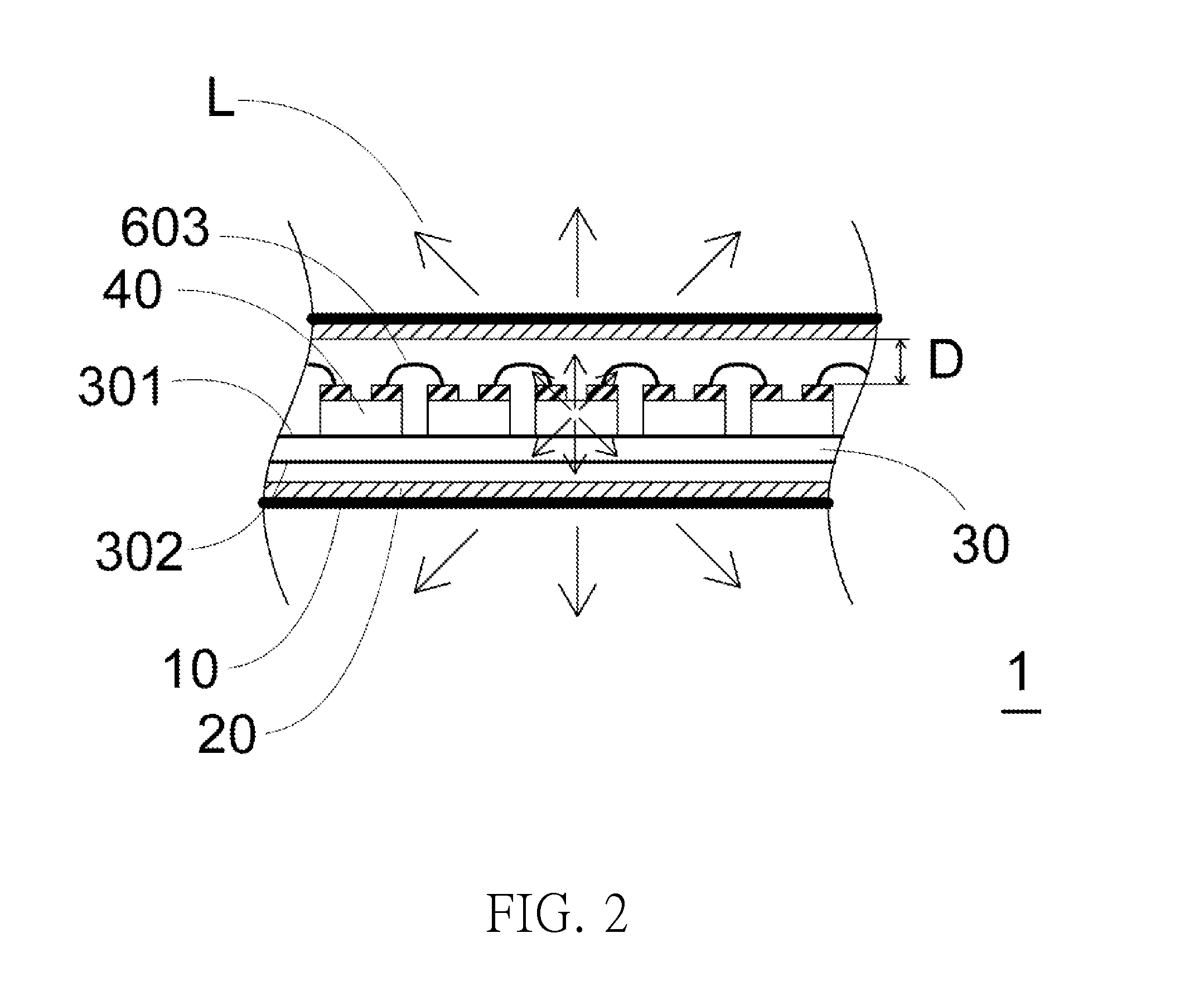Light emitting diode package structure
a technology of light-emitting diodes and package structures, which is applied in the direction of basic electric elements, electrical apparatus, and semiconductor devices, can solve the problems of unsuitable lighting devices for traditional lighting, poor heat dissipation of glues, and unpopularity in the market, and achieve better illumination efficiency and better uniformity of reflected ligh
- Summary
- Abstract
- Description
- Claims
- Application Information
AI Technical Summary
Benefits of technology
Problems solved by technology
Method used
Image
Examples
Embodiment Construction
[0041]Please refer to FIGS. 1 and 2, in the preferred embodiment of the present invention, the light emitting diode package structure 1 includes an encapsulation case 10, a phosphor layer 20, a substrate 30, and a light emitting diode chip 40. The encapsulation case 10 has an accommodating space 101. The phosphor layer 20 is coated on a side of the encapsulation case 10. The substrate 30 is disposed inside the accommodating space 101. The light emitting diode chip 40 is disposed on a first surface 301 of the substrate 30 and is separated from the phosphor layer 20 by a distance D.
[0042]Specifically, in the preferred embodiment of the present invention, a material of the encapsulation case 10 is selected from a group consisting of poly methyl methacrylate, polycarbonate, SiO2, BK7, and glass. The encapsulation case 10 includes an opening 102. The substrate 30 is disposed inside the accommodating space 101 through the opening 102.
[0043]In the preferred embodiment of the present invent...
PUM
 Login to View More
Login to View More Abstract
Description
Claims
Application Information
 Login to View More
Login to View More - R&D
- Intellectual Property
- Life Sciences
- Materials
- Tech Scout
- Unparalleled Data Quality
- Higher Quality Content
- 60% Fewer Hallucinations
Browse by: Latest US Patents, China's latest patents, Technical Efficacy Thesaurus, Application Domain, Technology Topic, Popular Technical Reports.
© 2025 PatSnap. All rights reserved.Legal|Privacy policy|Modern Slavery Act Transparency Statement|Sitemap|About US| Contact US: help@patsnap.com



